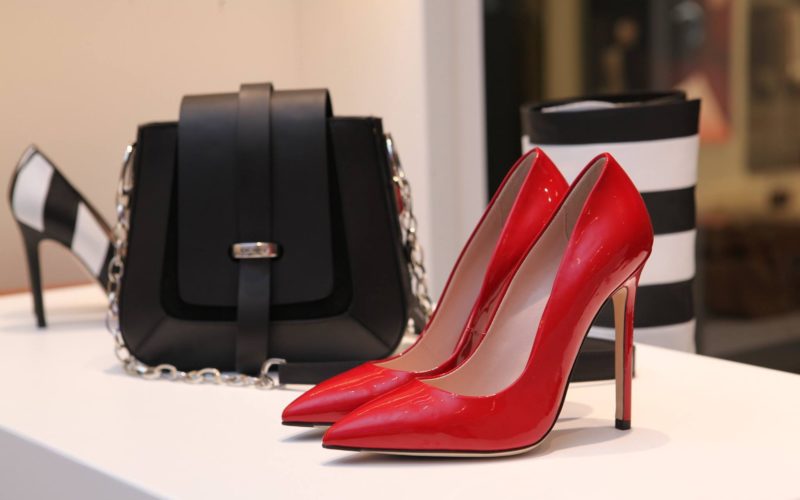New York’s fashion industry powers 180,000 jobs, makes up 6% of the city’s workforce, and generates $10.9 billion in wages. 1[1]New York State Fashion Workers Act, S. S9832, 2023-2024th State Leg., Sponsor Memo, https://www.nysenate.gov/legislation/bills/2023/S9832 (accessed March 6, 2025). Yet, basic labor protections have been out of reach for the models, influencers, and artists behind the glamour. Now, change is finally on the horizon because, in June 2025, the New York Fashion Workers Act will take effect.
The New York State Fashion Workers Act (“Act”) will be implemented on June 19, 2025, paving the way toward labor protections and transparency in the fashion industry. 2[2]Christopher Wood, Fashion Forward: A New York Fashion Workers Act Threads New Standards, WL 342722 (RIA) (2025). For the first time, Model Management Companies (“MMCs”), New York companies that manage the models’ careers, 3[3]New York State Fashion Workers Act, State S. S9832, 2023-2024th State Leg. §1034, 1 (N.Y. 2024). will be subject to state registration and stringent requirements to protect models’ rights. 4[4]Wood, supra note 2.
Hundreds of models “experience[] sexual exploitation at castings and photo shoots, [] beginning our careers in debt to our management companies and having our images manipulated with generative AI without our consent,” recounts model and founder of Model Alliance, a non-profit labor advocacy group, Sara Ziff, writing with 200 other models in an open letter signed to New York Governor Kathy Hochul about the reality of their careers. 5[5]Open Letter MODEL ALLIANCE (Dec. 18, 2024), https://www.modelalliance.org/openletter. From obtaining consent for AI and explicit use consent to essential financial transparency, Ziff is a staunch supporter of the Act and is confident it will “close the legal loophole by which management agencies escape licensing and regulation and extend protections [to models].” 6[6]Rafael Espinal & Sara Ziff, Op-Ed | New York freelancers are on the verge of a major victory — let’s not forget fashion workers, AMNY (Oct. 3, 2022), https://www.amny.com/opinion/new-york-freelancers-major-victory-fashion-workers/.
The Act closes a legal loophole by introducing key critical protections for models. It requires MMCs to act in good faith, safeguard models from exploitation, and obtain consent for explicit content and AI likeness. It also enforces fair pay, bans financial exploitation, prohibits retaliation, and holds clients accountable for overtime and working conditions, marking a significant shift toward industry-wide accountability.
Historical Context
For decades, New York’s fashion industry has operated without a legal framework to protect models, 7[7]New York State Fashion Workers Act, S. S9832, 2023-2024th State Leg., Sponsor Memo, https://www.nysenate.gov/legislation/bills/2023/S9832 (accessed March 6, 2025). leaving them vulnerable to wage theft, exploitative working conditions, underage labor, and sexual abuse. 8[8]Daniel Lehman, Supermodel Sara Ziff Forms Model Alliance to Save Models and Fashion, BACKSTAGE (July 17, 2019), https://www.backstage.com/magazine/article/supermodel-sara-ziff-forms-model-alliance-save-models-fashion-54156/
MMCs often charge models a 20% commission, 9[9]Lisa Lockwood, The Model Conundrum: Waiting to Be Paid, WOMEN’S WEAR DAILY (Sept. 11, 2019), https://wwd.com/feature/models-wait-to-be-paid-1203209908/. double the 10% cap enforced in a similar field for actors by SAG-AFTRA and Actors’ Equity. 10[10]Agency Commission Schedule, ACTORS’ EQUITY (accessed Apr. 3, 2025) https://www.actorsequity.org/resources/agency-information/agency-commission-schedule; GSA Contract Update, SAG-AFTRA (accessed Apr. 3, 2025) https://www.sagaftra.org/contracts-industry-resources/agents-managers/gsa-contract-update#:~:text=Rate%20of%20Commission&text=Your%20agent%20may%20collect%20no,SAG%20or%20AFTRA%20agency%20regulations. MMCs can go further by deducting expenses like rent, travel, and website fees from models’ pay, leaving many in debt to the very agencies meant to support them. 11[11]Lockwood, supra note 9. For example, a model with The Industry Model MGMT and co-creator of its Model’s Bill of Rights recalls the countless times she felt “hostage” to MMCs because they would not pay her for jobs for “more than 250 days.” 12[12]Lockwood, supra note 9.
Ziff confirms that models often feel pressure to pose nude and comply with the industry’s demanding schedule at a young age. 13[13]Emily Shugerman, She Blew Up Her Life to Reform the Fashion Industry In the success of the Adult Survivors Act, model turned activist Sara Ziff finds a silver lining, THE CUT (June 7, 2024), https://www.thecut.com/article/sara-ziff-model-alliance-adult-survivors-act.html. She notes these circumstances can make it easier for sexual abuse and assault to occur. 14[14]Lehman, supra note 8. The systemic abuses have persisted despite efforts by advocates like Ziff, who dedicates her time to advancing model protections and rights after being “blacklisted” in the industry for sharing her experiences of being sexually abused and exploited as a fashion model. 15[15]Ashleigh Carter, How Community Organizing Is Changing the Fashion Industry for Workers and Beyond, TEEN VOGUE (Oct. 25, 2024), https://www.teenvogue.com/story/how-activism-and-community-organizing-is-changing-fashion-for-workers-and-beyond.
Today, MMCs, clients, and the like can also use technology to exploit models. 16[16]I’m a Model, and I’ve Seen Firsthand How AI Can Manipulate the Fashion Industry, FAST COMPANY (Dec. 18, 2024), https://www.fastcompany.com/91248059/im-a-model-and-ive-seen-firsthand-how-ai-can-manipulate-the-fashion-industry. Specifically, a Taiwanese American model and member of Model Alliance’s Workers Council found her image digitally altered after a Michael Costello fashion show to that of a white woman without her knowledge or consent. 17[17]Id.
In addition, the short career span of a model only exacerbates the problems faced by many young models from small towns or abroad who fear speaking out, realizing the injustices they face after their modeling careers are over. 18[18]Lehman, supra note 8. Esmeralda Seay-Reynolds recalls being sixteen years old, “pull[ing] up to a glacier above freezing, ice-covered waters” in heels and a thin dress during a hailstorm, forced to change clothes at the top publically, and told she couldn’t leave because she’d “take too much time.” 19[19]Tatiana Siegel, Inside the Fashion World’s Dark Underbelly of Sexual and Financial Exploitation: ‘Modeling Agencies Are Like Pimps For Rich People’, VARIETY (June 20, 2023), https://variety.com/2023/film/news/fashion-models-sexual-abuse-financial-exploitation-unsafe-sets-1235648697/.
Advocacy groups like the Model Alliance have spent years lobbying for industry-wide accountability, and their efforts helped drive the passage of this Act. 20[20]Rosemary Feitelberg, Models Gain Muscle: Fashion Workers Act Becomes a Law in New York, WOMEN’S WEAR DAILY (Dec. 23, 2024), https://wwd.com/fashion-news/fashion-scoops/models-muscle-fashion-workers-act-new-york-law-1236777035/. On December 18, 2024, Beverly Johnson, Christy Turlington Burns, Alessandra Ambrosio, and Soo Joo Park, along with over 200 fashion models, sent an open letter to Governor Kathy Hochul urgently requesting she enact the law to protect from financial, sexual, and emotional abuse within the industry. 21[21]Open Letter, supra note 5. On December 21, 2024, Governor Hochul’s signing of the Act into law established standards for MMCs and clients aimed at preventing financial exploitation, sexual abuse, unsafe working conditions, and the mistreatment of underage models. 22[22]New York State Fashion Workers Act, S. S9832, 2023-2024th State Leg., Sponsor Memo, https://www.nysenate.gov/legislation/bills/2023/S9832 (accessed March 6, 2025). These longstanding problems have mostly gone unaddressed through civil legislation until now, making the recent passage of the Act a significant step toward reform.
Key Protections Under the Act
At the heart of the Act is the provision of fiduciary duty. MMCs must act in “good faith, with the utmost honesty and integrity, in the best interests of the models” during “negotiations, contracts, financial management, and the protection of the models’ legal and financial rights.” 23[23]New York State Fashion Workers Act, State S. S9832, 2023-2024th State Leg. §1034, 1 (N.Y. 2024). By legally requiring MMCs to prioritize the interests of the models they represent, this provision directly addresses the structural power imbalance that has long defined the modeling industry.
Another pivotal aspect of the Act is that it supports the models’ safety and well-being by requiring MMCs to exercise due diligence to protect models from unreasonable risks. 24[24]Id. at §1034, 2. Due diligence here includes “establish[ing] and communicat[ing] a zero-tolerance policy for abuse, harassment, or any other form of inappropriate behavior.” 25[25]Id. Moreover, the Act protects models regarding explicit content. MMCs must ensure that nudity and sexually explicit materials comply with Civil Rights Law, 26[26] Id. at §1034, 4. which requires models to consent to the material by signing an agreement. 27[27]N.Y. Civ. Rights Law § 52-c (McKinney 2024). The Act further stipulates that models may rescind their consent by written notice. 28[28]Id. These requirements create more transparent standards for professional conduct and help ensure that models control how their bodies and images are used in their work.
Additionally, MMCs must obtain consent, “separate[] from the representation agreement,” from models for the entire scope of their artificial intelligence-enhanced likeness. 29[29] Id. at §1034, 11. Given the industry’s history of exploitation, as seen with the Taiwanese American model at the Michael Costello fashion show, these protections are essential to ensuring models have extra control over their image.
Further, the Act introduces significant provisions against financial exploitation, preventing MMCs from charging upfront fees, imposing unauthorized deductions, and charging commissions of over 20% of a model’s payment. 30[30]Id. at §1035. MMCs are not allowed to require contracts longer than three years or ones that renew without consent. 31[31]Id. Models can now expect more transparency and clear limitations regarding their financial dealings.
Notably, the Act includes strong protections against retaliation and mistreatment. MMCs cannot retaliate against models who “file[] or attempt[] to file a complaint pursuant to this article or decline[] or discontinue[] participation in any casting or booking on account of reasonable, good faith concerns regarding an actual or potential violation.” 32[32]Id. This will help prevent the kind of “blacklisting” Ziff experienced when she shared her experience about being sexually abused in the industry. Additionally, to ensure a fair and respectful work environment, MMCs are explicitly banned from “engag[ing] in discrimination or harassment of any kind against a model because of any protected status covered under paragraph (a) of subdivision one of section two hundred ninety-six of the executive law.” 33[33]Id. Namely, unlawful discrimination and harassment under the Act would include an MMC refusing to book a model based on their “age, race, creed, color, national origin, citizenship or immigration status, sexual orientation, gender identity or expression, military status, sex, disability, predisposing genetic characteristics, familial status, or status as a victim of domestic violence.” 34[34]N.Y. Exec. § 296 (McKinney 2025), https://www.nysenate.gov/legislation/laws/EXC/296. These provisions bolster models to feel protected from unfair treatment and free of fear of discrimination or retaliation.
The Act also mandates that clients (i.e., designers, retailers, photographers, or advertising agencies 35[35]Id. at §1031, 1.) compensate models at least 50% higher than their contracted rate for jobs that extend beyond an eight-hour workday and provide at least one 30-minute meal break. 36[36]Id. at §1037. This provision addresses concerns that clients, who often work directly with models, should be held accountable too.
Preparing for Compliance
As the Act comes into effect,“[t]he required changes will be a heavy lift,” says Miguel Lopez, a shareholder at Littler Mendelson and an employment law expert, in his discussion with Thomson Reuters’ Checkpoint Payroll Update. 37[37]Wood, supra note 2. Lopez urges MMCs and their clients to facilitate this transition by beginning preparations now. 38[38]Id.
Michael Isselin, Staci Trager, and Emily Faro, partners, and an attorney, respectively, at DLA Piper, a global law firm, outline several proactive steps that MMCs and clients can take to ensure compliance with the Act. 39[39]Id. at *4.
They recommend that MMCs “establish comprehensive policies and training programs on anti-harassment, financial transparency, and workers’ rights.” 40[40]Id. To support these initiatives, they suggest implementing “internal grievance mechanisms” to handle any internal violations efficiently. 41[41]Id. Regarding the financial provisions of the Act, MMCs are recommended to implement transparent systems that involve the “reporting of payments and deductions” and possibly “audit[ing] payment practices to ensure timely and accurate compensation.” 42[42]Id. The authors also encourage MMCs to “conduct a review of their [AI] practices to [] avoid unauthorized use of likenesses.” 43[43]Id.
For clients, Isselin, Trager, and Faro recommend updating contracts to include new standards for overtime pay, meal breaks, and insurance coverage. 44[44]Id. This may require reviewing and revising agreements with management firms and implementing training programs to ensure everyone involved in bookings knows the new obligations. 45[45]Id. Auditing their existing contracts might be a good way to ensure clients meet the new requirements. 46[46]Id.
Legal Recourse and Accountability
In addition to considering methods for compliance, MMCs and clients should note the kinds of penalties these violations may incur. The Act provides that an initial offense can result in a civil penalty of up to $3,000, with subsequent violations increasing to $5,000. 47[47]New York State Fashion Workers Act, State S. S9832, 2023-2024th State Leg. §1038, 3(a) (N.Y. 2024).
One of the most significant aspects of the Act is that it grants models a private right of action, allowing them to directly sue MMCs for violations rather than rely solely on the government. 48[48]Id. at $1038, 8. This provision fundamentally shifts the power dynamic from big companies in an industry where models, mainly those young, inexperienced, or non-American and unfamiliar with U.S. labor protections, have had limited avenues for recourse. 49[49]Lauren Cochrane, More Than 200 Fashion Models Urge New York Governor to Sign Bill of Rights, THE GUARDIAN (Dec. 19, 2024), https://www.theguardian.com/us-news/2024/dec/19/fashion-workers-act-new-york-models. Models can take MMCs who violate this Act directly to court, allowing MMCs to be liable for damages and attorney’s fees. 50[50]N.Y. State S. S9832, §1038, 8.
However, beyond financial consequences, the Act’s real impact through litigation is to provide further support for models to assert their right to dignity and respect. Pushing for clear contracts, consent for explicit content, fair wages, and prevention of discriminatory behavior and retaliation is a step in the right direction.
This newly granted legal leverage is significant for models outside the industry’s elite, as they are often the most vulnerable to financial exploitation, abuses, and power imbalances. 51[51]Cochrane, supra note 49. The models’ ability to take legal action ensures they can assert control over earnings, demand fair treatment, and challenge exploitative industry norms in previously unavailable ways.
While this Act makes great strides toward protecting models, there is still work to be done. Dale Noelle, CEO and founder of model management firm True Inc. points out that the Act may not be as beneficial for models as it initially seems. 52[52]Laurel Deppen, Fashion Workers Act signed into law in New York, FASHION DIVE (Jan. 3, 2025), https://www.fashiondive.com/news/fashion-workers-act-signed-into-law/736426/. She argues the bill fails to address a key issue: MMCs do not actually have as much control over models’ work. 53[53]Id. Models often work directly with clients, who remain less protected under the Act while still holding significant power. 54[54]Id. This missing coverage means that the Act does not fully address the realities of how models work and earn a living.
Despite any limitations, the Act marks a turning point for the New York fashion industry, setting an important precedent for labor protections in a historically unregulated field and paving the way for a fairer industry for models. This Act symbolizes progress that should serve as a foundation for even stronger protections and a safe and transparent fashion industry for models, MMCs, and clients.
By: Gabriella Schifano, 2027 J.D. Candidate at Brooklyn Law School
[1] New York State Fashion Workers Act, S. S9832, 2023-2024th State Leg., Sponsor Memo,
https://www.nysenate.gov/legislation/bills/2023/S9832 (accessed March 6, 2025).
[2] Christopher Wood, Fashion Forward: A New York Fashion Workers Act Threads New Standards, WL 342722 (RIA) (2025).
[3] New York State Fashion Workers Act, State S. S9832, 2023-2024th State Leg. §1034, 1 (N.Y. 2024).
[4] Wood, supra note 2.
[5] Open Letter MODEL ALLIANCE (Dec. 18, 2024), https://www.modelalliance.org/openletter.
[6] Rafael Espinal & Sara Ziff, Op-Ed | New York freelancers are on the verge of a major victory — let’s not forget fashion workers, AMNY (Oct. 3, 2022), https://www.amny.com/opinion/new-york-freelancers-major-victory-fashion-workers/
[7] New York State Fashion Workers Act, S. S9832, 2023-2024th State Leg., Sponsor Memo,
https://www.nysenate.gov/legislation/bills/2023/S9832 (accessed March 6, 2025).
[8] Daniel Lehman, Supermodel Sara Ziff Forms Model Alliance to Save Models and Fashion, BACKSTAGE (July 17, 2019), https://www.backstage.com/magazine/article/supermodel-sara-ziff-forms-model-alliance-save-models-fashion-54156/
[9] Lisa Lockwood, The Model Conundrum: Waiting to Be Paid, WOMEN’S WEAR DAILY (Sept. 11, 2019), https://wwd.com/feature/models-wait-to-be-paid-1203209908/.
[10] Agency Commission Schedule, ACTORS’ EQUITY (accessed Apr. 3, 2025) https://www.actorsequity.org/resources/agency-information/agency-commission-schedule; GSA Contract Update, SAG-AFTRA (accessed Apr. 3, 2025) https://www.sagaftra.org/contracts-industry-resources/agents-managers/gsa-contract-update#:~:text=Rate%20of%20Commission&text=Your%20agent%20may%20collect%20no,SAG%20or%20AFTRA%20agency%20regulations.
[11] Lockwood, supra note 9.
[12] Lockwood, supra note 9.
[13] Emily Shugerman, She Blew Up Her Life to Reform the Fashion Industry In the success of the Adult Survivors Act, model turned activist Sara Ziff finds a silver lining, THE CUT (June 7, 2024), https://www.thecut.com/article/sara-ziff-model-alliance-adult-survivors-act.html.
[14] Lehman, supra note 8.
[15] Ashleigh Carter, How Community Organizing Is Changing the Fashion Industry for Workers and Beyond, TEEN VOGUE (Oct. 25, 2024), https://www.teenvogue.com/story/how-activism-and-community-organizing-is-changing-fashion-for-workers-and-beyond.
[16] I’m a Model, and I’ve Seen Firsthand How AI Can Manipulate the Fashion Industry, FAST COMPANY (Dec. 18, 2024), https://www.fastcompany.com/91248059/im-a-model-and-ive-seen-firsthand-how-ai-can-manipulate-the-fashion-industry.
[17] Id.
[18] Lehman, supra note 8.
[19] Tatiana Siegel, Inside the Fashion World’s Dark Underbelly of Sexual and Financial Exploitation: ‘Modeling Agencies Are Like Pimps For Rich People’, VARIETY (June 20, 2023), https://variety.com/2023/film/news/fashion-models-sexual-abuse-financial-exploitation-unsafe-sets-1235648697/.
[20] Rosemary Feitelberg, Models Gain Muscle: Fashion Workers Act Becomes a Law in New York, WOMEN’S WEAR DAILY (Dec. 23, 2024), https://wwd.com/fashion-news/fashion-scoops/models-muscle-fashion-workers-act-new-york-law-1236777035/.
[21] Open Letter, supra note 5.
[22] New York State Fashion Workers Act, S. S9832, 2023-2024th State Leg., Sponsor Memo,
https://www.nysenate.gov/legislation/bills/2023/S9832 (accessed March 6, 2025).
[23] New York State Fashion Workers Act, State S. S9832, 2023-2024th State Leg. §1034, 1 (N.Y. 2024).
[24] Id. at §1034, 2.
[25] Id.
[26] Id. at §1034, 4.
[27] N.Y. Civ. Rights Law § 52-c (McKinney 2024).
[28] Id.
[29] Id. at §1034, 11.
[30] Id. at §1035.
[31] Id.
[32] Id.
[33] Id.
[34] N.Y. Exec. § 296 (McKinney 2025), https://www.nysenate.gov/legislation/laws/EXC/296.
[35] Id. at §1031, 1.
[36] Id. at §1037.
[37] Wood, supra note 2.
[38] Id.
[39] Michael Isselin et al., Preparing for the New York Fashion Workers Act, DLA PIPER (Jan. 13, 2025), https://www.dlapiper.com/en-us/insights/publications/2025/01/preparing-for-new-york-fashion-workers-act-compliance.
[40] Id.
[41] Id.
[42] Id.
[43] Id.
[44] Id.
[45] Id.
[46] Id.
[47] New York State Fashion Workers Act, State S. S9832, 2023-2024th State Leg. §1038, 3(a) (N.Y. 2024).
[48] Id. at $1038, 8.
[49] Lauren Cochrane, More Than 200 Fashion Models Urge New York Governor to Sign Bill of Rights, THE GUARDIAN (Dec. 19, 2024), https://www.theguardian.com/us-news/2024/dec/19/fashion-workers-act-new-york-models.
[50] N.Y. State S. S9832, §1038, 8.
[51] Cochrane, supra note 49.
[52] Laurel Deppen, Fashion Workers Act signed into law in New York, FASHION DIVE (Jan. 3, 2025), https://www.fashiondive.com/news/fashion-workers-act-signed-into-law/736426/.
[53] Id.
[54] Id.




